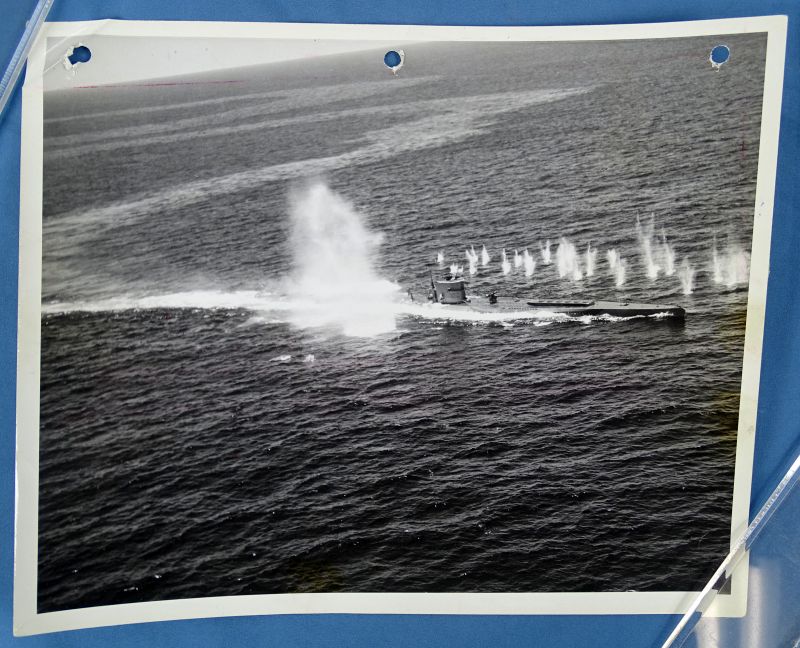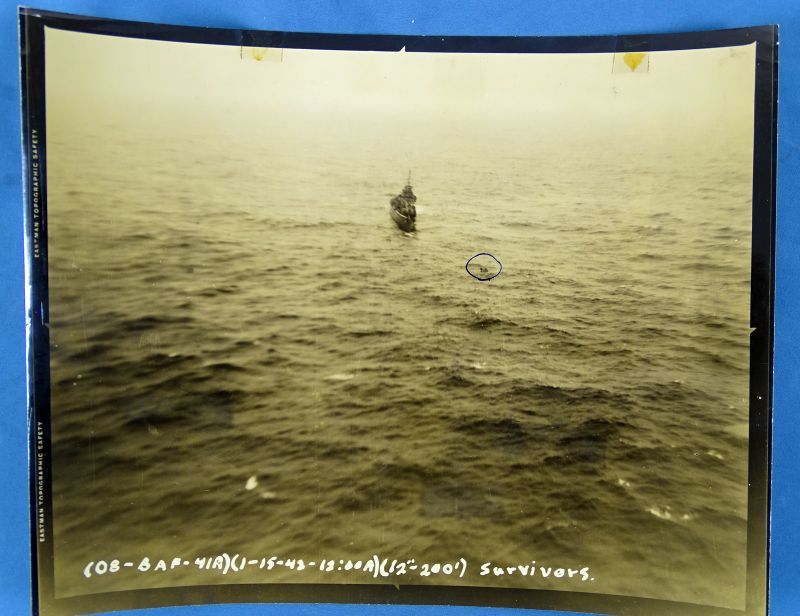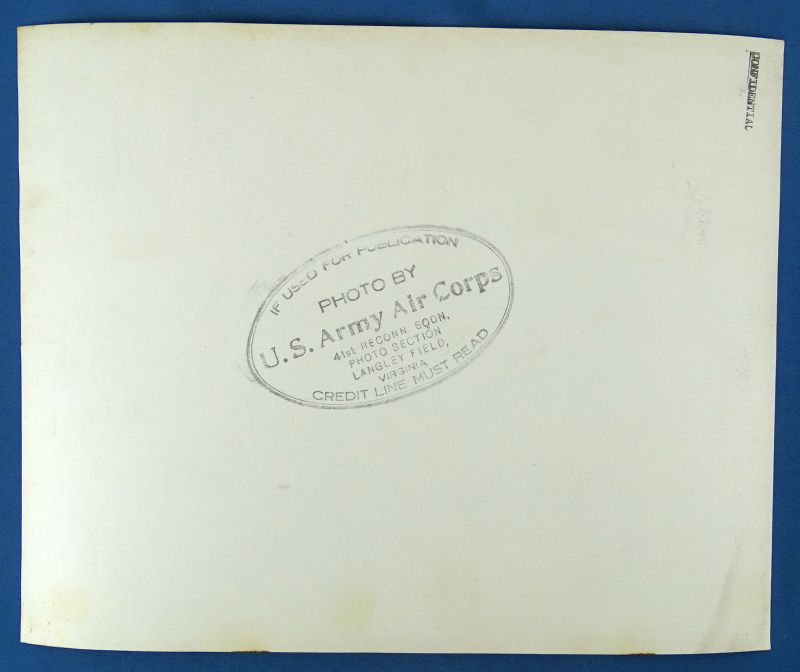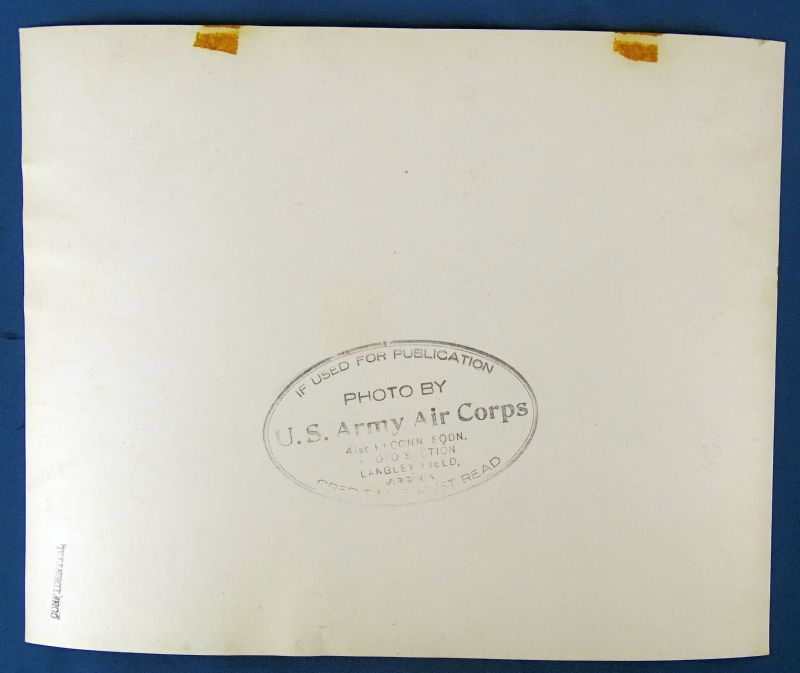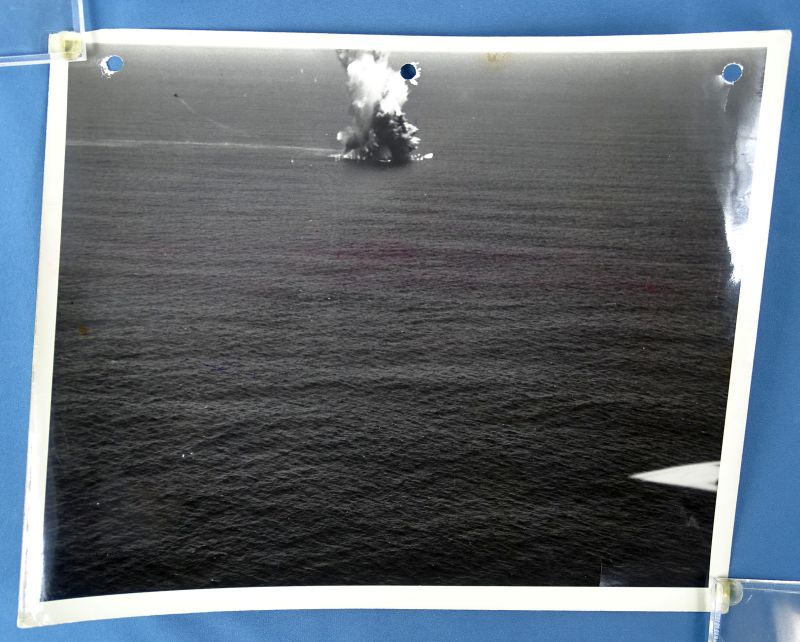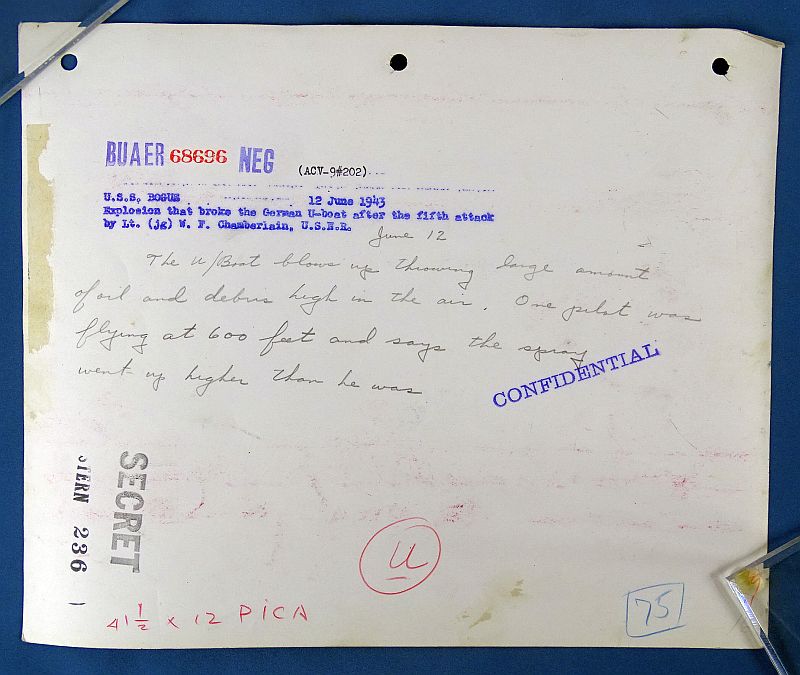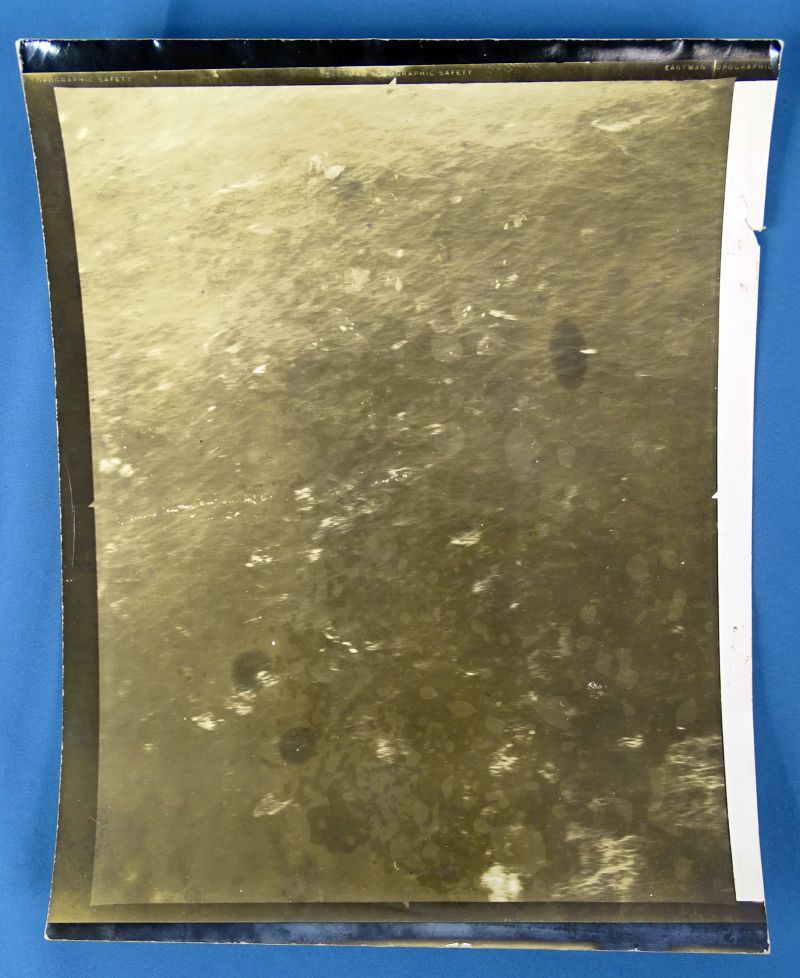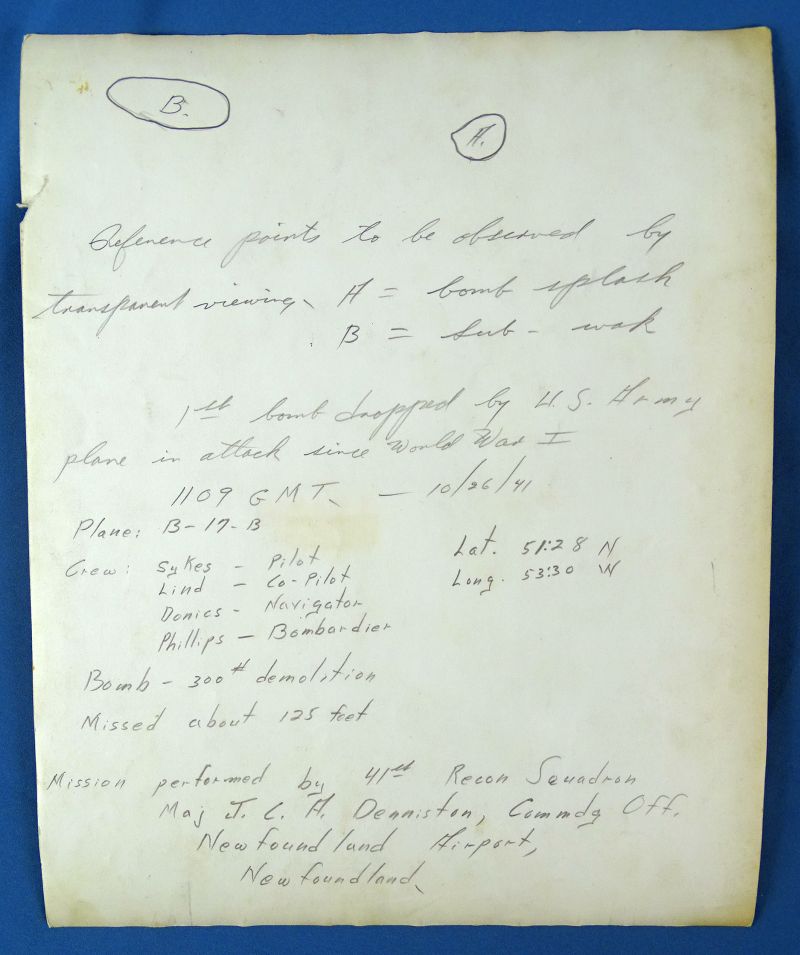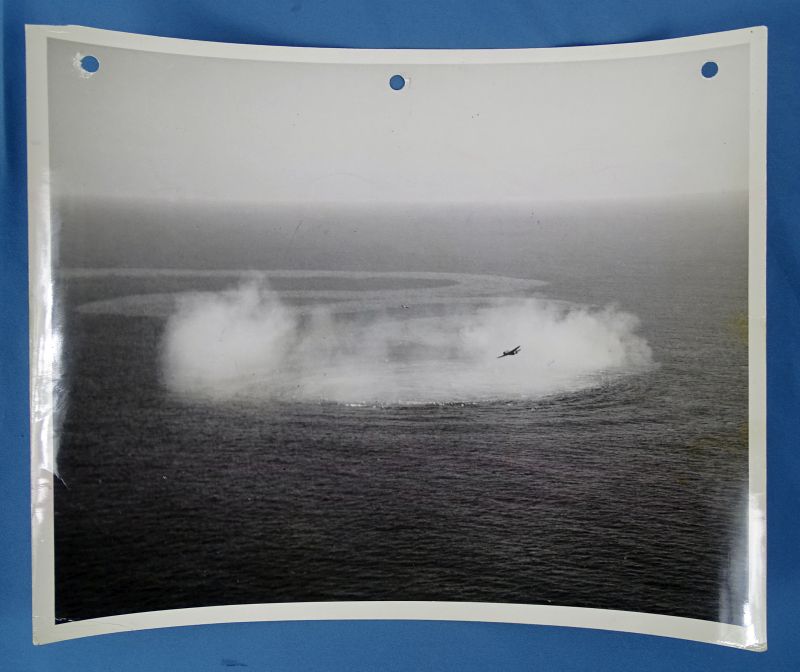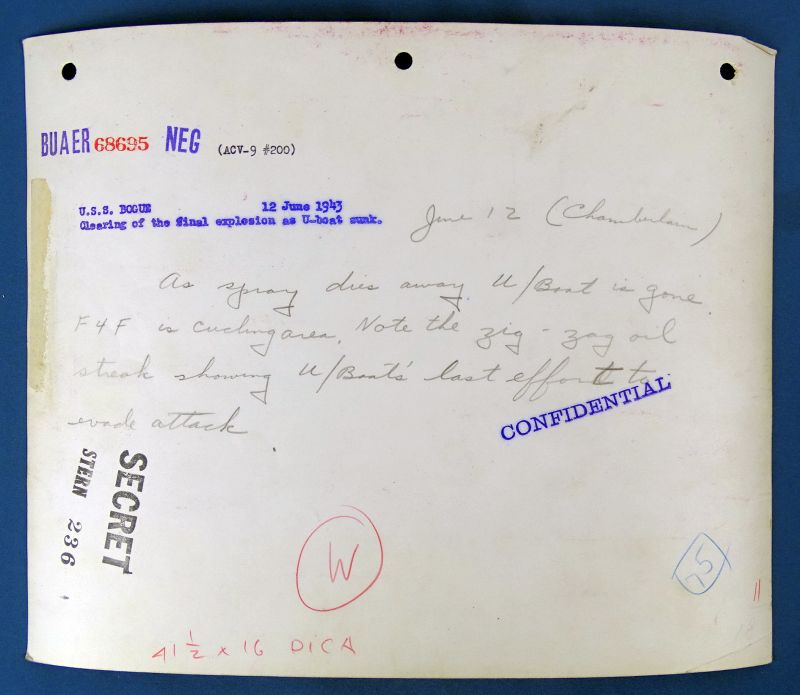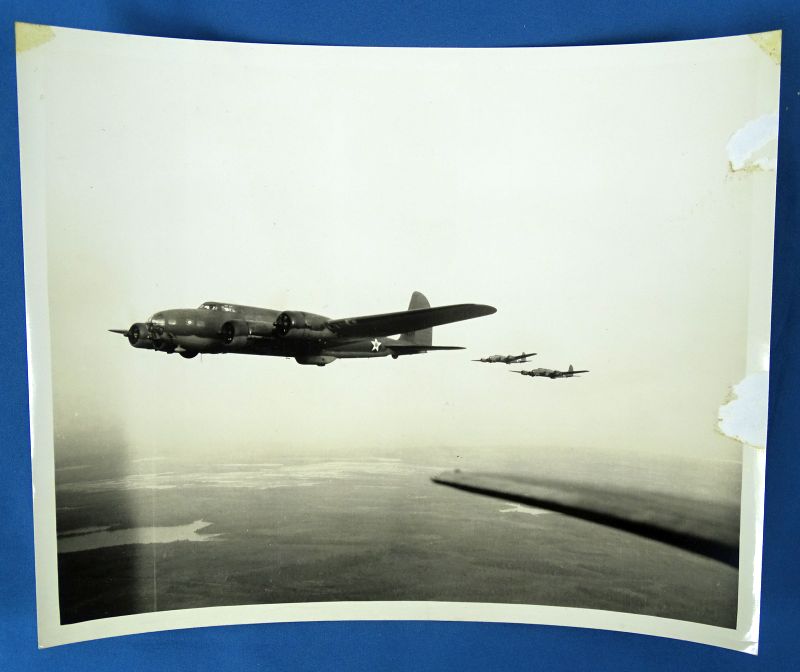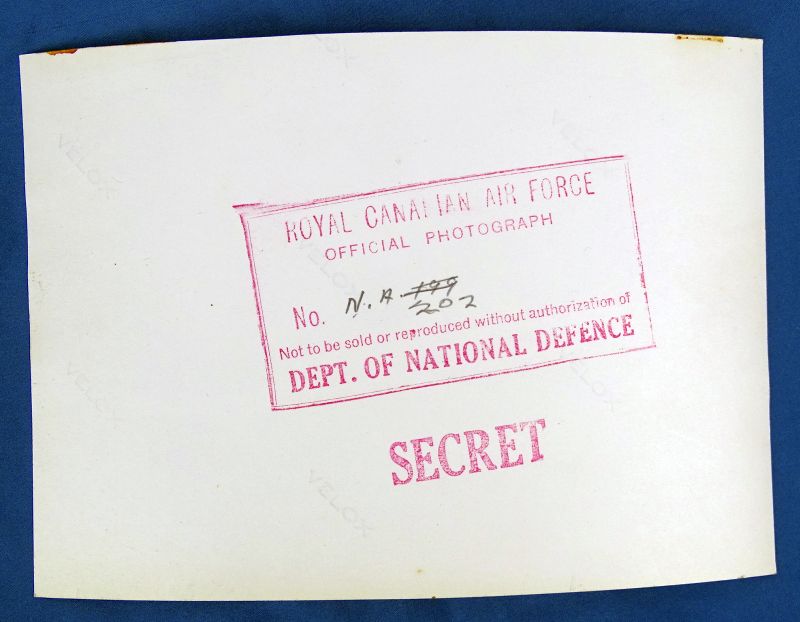21 Large WWII Photographs of the War Against the German U-Boats
$175.00
The group consists of 21 black and white photographs, most approximately 8 inches by 10 inches, with five photographs being approximately 5 inches by 6-1/2 inches. Many of the photographs bear handwritten notations on the reverse. Five of the large photographs have 3 holes punched into one side. The backs of some of the photographs bear an Army Air Force imprint, with a number of the photographs being stamped “Secret” and “Confidential”. All of the photographs appear to have been taken during operations against the German U-Boats in the north Atlantic. A few photographs depict the rescue of survivors of a U-Boat attack, while many of the photographs show attacks being carried out, including one the depicts a U-Boat on the surface under attack. This appears to be one of several photographs in a series that show the hunt for, and the destruction of, this U-Boat, evidently by aircraft from the USS Bogue. The Bogue was an escort carrier that was involved in anti-submarine warfare. The dates on the reverse of this series of photographs is 12 June, 1943. On that date the already damaged U-118 was sunk by aircraft from Bogue with bombs and gunfire, and 16 of the boat’s crew were picked up by the escort vessel USS Osmond Ingram. In fact, one of the the larger photographs in this group, which shows the submarine on the surface, is the same photograph that was used on the Wikipedia page for the U-118. There is also an interesting photograph, with a back mark of the Royal Canadian Air Force as well as a “Secret” mark, which shows a Soviet TB-7 bomber (which the Soviets would re-designate as the “Pe-8”). Only 93 of these bombers were built by the Soviet Union. Most of the photographs are in excellent condition, 3 show some losses to the faces.
From Wikipedia:
“The Petlyakov Pe-8 was a Soviet heavy bomber designed before World War II, and the only four-engine bomber the USSR built during the war. Produced in limited numbers, it was used to bomb Berlin in August 1941. It was also used for so-called “morale raids” designed to raise the spirit of the Soviet people by exposing Axis vulnerabilities. Its primary mission, however, was to attack German airfields, rail yards and other rear-area facilities at night, although one was used to fly the People’s Commissar of Foreign Affairs (Foreign Minister) Vyacheslav Molotov from Moscow to the United States in 1942. Originally designated the TB-7, the aircraft was renamed the Pe-8 after its primary designer, Vladimir Petlyakov, died in a plane crash in 1942. Supply problems complicated the aircraft’s production and the Pe-8s also had engine problems. As Soviet morale boosters, they were also high-value targets for the Luftwaffe’s fighter pilots. The loss rate of these aircraft, whether from mechanical failure, friendly fire, or combat, doubled between 1942 and 1944.By the end of the war, most of the surviving aircraft had been withdrawn from combat units. After the war, some were modified as transports for important officials, and a few others were used in various Soviet testing programs. Some supported the Soviet Arctic operations until the late 1950s.”


